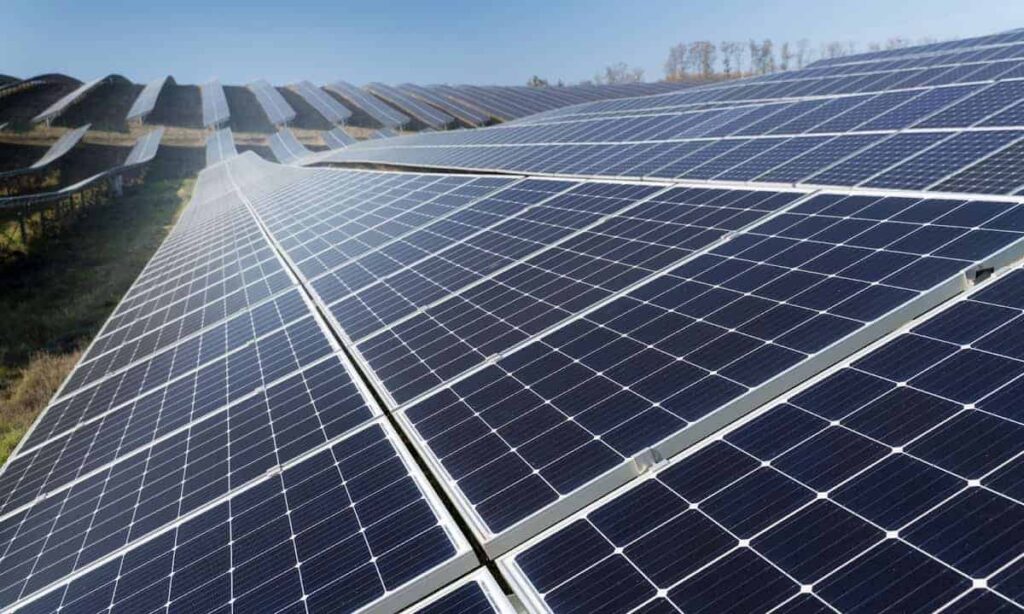Solar energy is making waves in the world of power generation. With concerns about climate change and a push for renewable energy sources, solar panels have become a beacon of hope. But why all the buzz about solar energy? Well, not only is it a clean and abundant energy source, but it’s also becoming more affordable and accessible. Let’s dive into the future of solar energy and see how solar panels are transforming power generation.
The History of Solar Energy
The journey of solar energy dates back to the 19th century when the photovoltaic effect was first discovered by Alexandre Edmond Becquerel. Fast forward to the mid-20th century, and we saw the first practical solar cell developed by Bell Labs. These early developments paved the way for the solar panels we know today, which are now an integral part of our energy landscape.
How Solar Panels Work
At its core, solar energy harnesses the power of the sun and converts it into electricity. This process is made possible by photovoltaic (PV) cells, which are the building blocks of solar panels. When sunlight hits these cells, it excites the electrons, creating an electric current. This electricity can then be used to power homes, businesses, and even entire cities.
Types of Solar Panels
Solar panels come in various types, each with its unique features:
Monocrystalline Solar Panels
These are known for their high efficiency and sleek design. Made from a single crystal structure, they offer the best performance but are also the most expensive.
Polycrystalline Solar Panels
These panels are made from multiple crystal structures, making them less efficient than monocrystalline but more affordable. They are easily recognizable by their blue color.
Thin-Film Solar Panels
Thin-film panels are lightweight and flexible, making them ideal for unconventional surfaces. They are less efficient but offer versatility in installation.
Advantages of Solar Energy
Solar energy brings numerous benefits to the table:
Environmental Benefits
Solar energy is a clean, green source of power. It reduces our reliance on fossil fuels, cutting down on greenhouse gas emissions and pollution.
Economic Benefits
Investing in solar panels can lead to significant savings on electricity bills. Moreover, the solar industry creates jobs and boosts economic growth.
Energy Independence
By generating their electricity, households and businesses can reduce their dependence on the grid, leading to greater energy security.
Challenges Facing Solar Energy
Despite its many advantages, solar energy faces some challenges:
Initial Costs and Investments
The upfront cost of installing solar panels can be high, though this is gradually decreasing with advancements in technology.
Energy Storage Issues
Solar power is intermittent, meaning it’s not always available when the sun isn’t shining. Effective energy storage solutions are essential to overcome this limitation.
Efficiency and Space Requirements
Solar panels require a significant amount of space to generate large amounts of power. Improving their efficiency remains a key focus for researchers.
Technological Advancements in Solar Panels
Innovation is at the heart of the solar industry. Recent advancements include:
Improvements in Photovoltaic Technology
Scientists are constantly working on increasing the efficiency of PV cells. New materials and designs promise to capture more sunlight and convert it into electricity.
Innovations in Solar Panel Design
From bifacial panels that absorb sunlight from both sides to solar tiles that blend seamlessly with roofs, design innovations are making solar panels more versatile and attractive.
Integration with Smart Technology
Smart solar systems can now monitor energy production and consumption in real-time, optimizing performance and maximizing savings.
The Role of Solar Energy in Combating Climate Change
Solar energy plays a crucial role in reducing our carbon footprint. By replacing fossil fuels with solar power, we can significantly cut down on greenhouse gas emissions. Moreover, solar energy supports the achievement of sustainable development goals, promoting a cleaner and more sustainable future.
Government Policies and Incentives
Governments around the world are recognizing the potential of solar energy and are implementing policies to support its adoption:
Tax Credits and Subsidies
Many countries offer tax incentives and subsidies to make solar installations more affordable for homeowners and businesses.
Renewable Energy Standards and Mandates
Policies mandating a certain percentage of energy to come from renewable sources are driving the growth of solar power.
Global Initiatives Supporting Solar Energy
International collaborations and agreements, such as the Paris Agreement, emphasize the importance of renewable energy in combating climate change.
The Economic Impact of Solar Energy
The solar industry is a significant driver of economic growth:
Job Creation in the Solar Industry
From manufacturing to installation and maintenance, the solar sector creates numerous job opportunities.
Cost Trends and Market Growth
The cost of solar technology continues to decrease, making it more accessible. The market for solar energy is expanding rapidly, driven by increasing demand and technological advancements.
Economic Benefits for Households and Businesses
Solar energy can lead to substantial savings on energy bills, making it an attractive investment for both residential and commercial properties.
Solar Energy in Residential Applications
Solar panels are becoming a common sight on rooftops across the globe:
Rooftop Solar Panels
These are the most common form of residential solar installations, providing a reliable source of electricity for homes.
Solar Power for Home Appliances
Solar energy can power everything from lights to air conditioning, reducing reliance on traditional electricity sources.
Net Metering and Energy Savings
Net metering allows homeowners to sell excess electricity back to the grid, further increasing the financial benefits of solar installations.
Commercial and Industrial Applications of Solar Energy
Solar energy is not just for homes; it’s transforming industries too:
Solar Farms and Large-Scale Installations
Large solar farms can generate significant amounts of electricity, supporting the grid and reducing the need for fossil fuels.
Solar Energy in Manufacturing and Business Operations
Businesses are increasingly adopting solar energy to power their operations, reducing costs and improving sustainability.
Future Trends in Solar Energy
The future of solar energy is bright, with exciting trends on the horizon:
Predictions for Solar Energy Adoption
Experts predict continued growth in solar energy adoption, driven by decreasing costs and increasing environmental awareness.
Emerging Technologies and Research Areas
Research into new materials, such as perovskites, promises to revolutionize solar technology, making it more efficient and affordable.
The Future of Solar Panel Materials
Innovations in materials science could lead to more efficient, durable, and flexible solar panels, expanding their applications.
Case Studies of Successful Solar Energy Projects
Numerous successful solar projects around the world highlight the potential of this technology:
Notable Solar Energy Projects Around the World
From the massive Tengger Desert Solar Park in China to the innovative Solar Impulse project, these initiatives showcase the transformative power of solar energy.
Lessons Learned from These Projects
These projects offer valuable insights into the challenges and successes of large-scale solar energy adoption, guiding future developments.
Conclusion
Solar energy is not just a trend; it’s the future of power generation. With ongoing technological advancements, supportive government policies, and increasing economic benefits, solar panels are set to play a pivotal role in our energy landscape. As we continue to innovate and invest in this clean, renewable energy source, the possibilities for a sustainable future are endless.
FAQs
1. What is the lifespan of a solar panel?
Solar panels typically have a lifespan of 25-30 years, with many continuing to produce electricity beyond this period.
2. How much can solar panels reduce my electricity bill?
The amount saved on electricity bills depends on factors such as the size of the installation and local electricity rates. On average, homeowners can save up to 70% on their energy bills.
3. Are there any environmental downsides to solar energy?
While solar energy is generally environmentally friendly, the production and disposal of solar panels do have some environmental impacts. However, these are significantly lower than those associated with fossil fuels.
4. How do I know if my home is suitable for solar panels?
Factors such as roof orientation, shading, and local climate affect the suitability of your home for solar panels. A professional assessment can provide a detailed evaluation.
5. What are the maintenance requirements for solar panels?
Solar panels require minimal maintenance, primarily consisting of periodic cleaning and inspections to ensure optimal performance.




